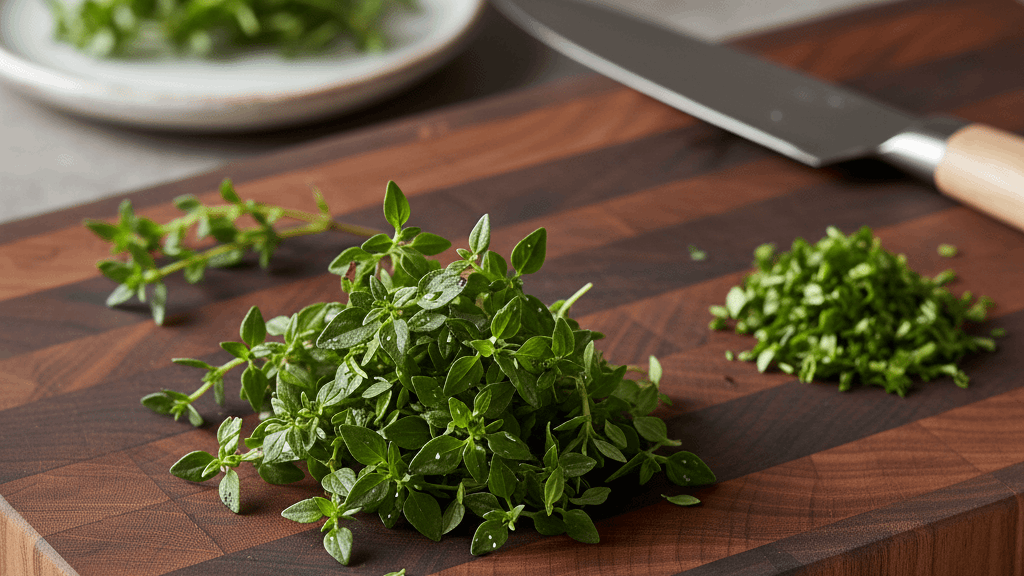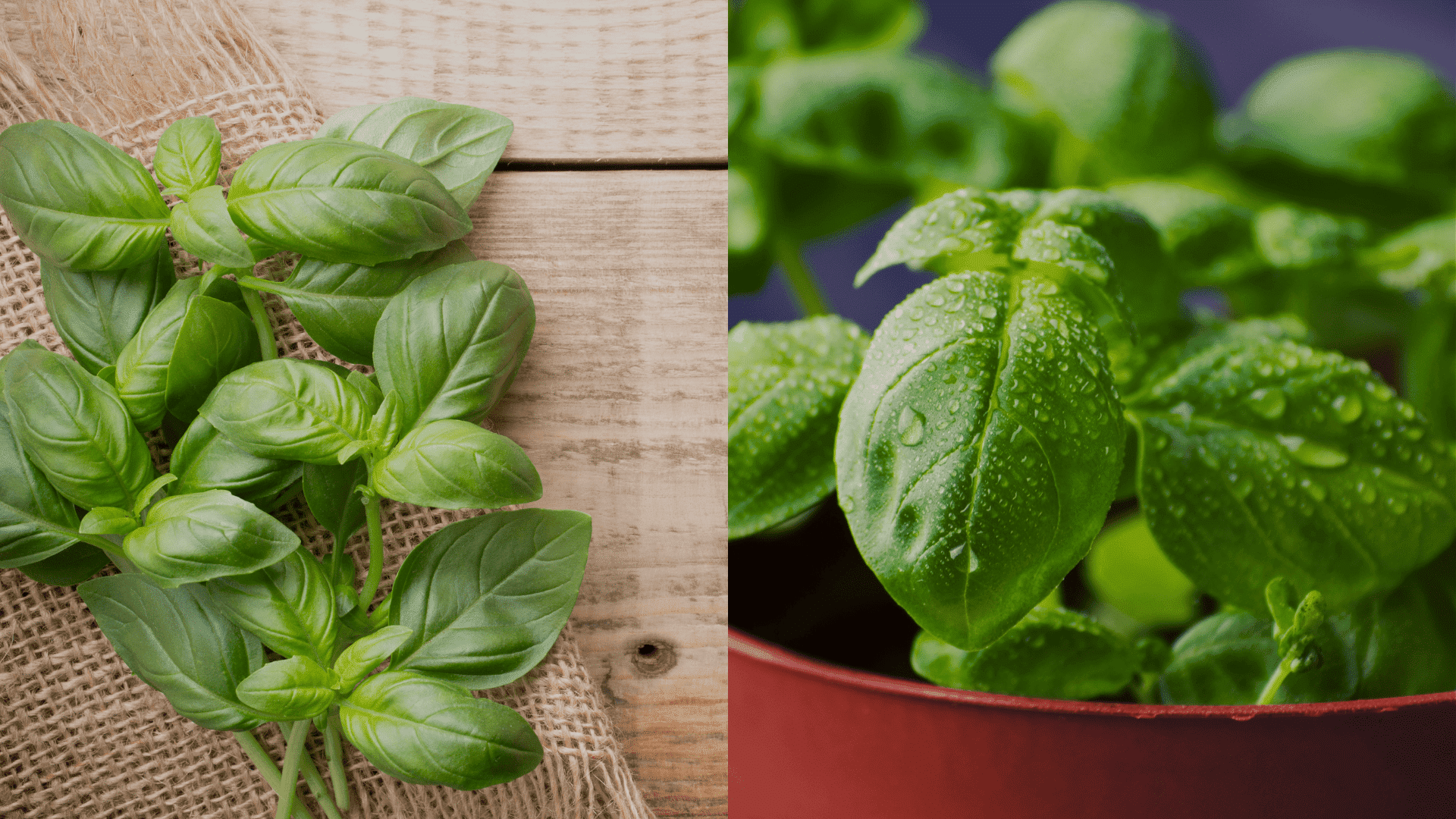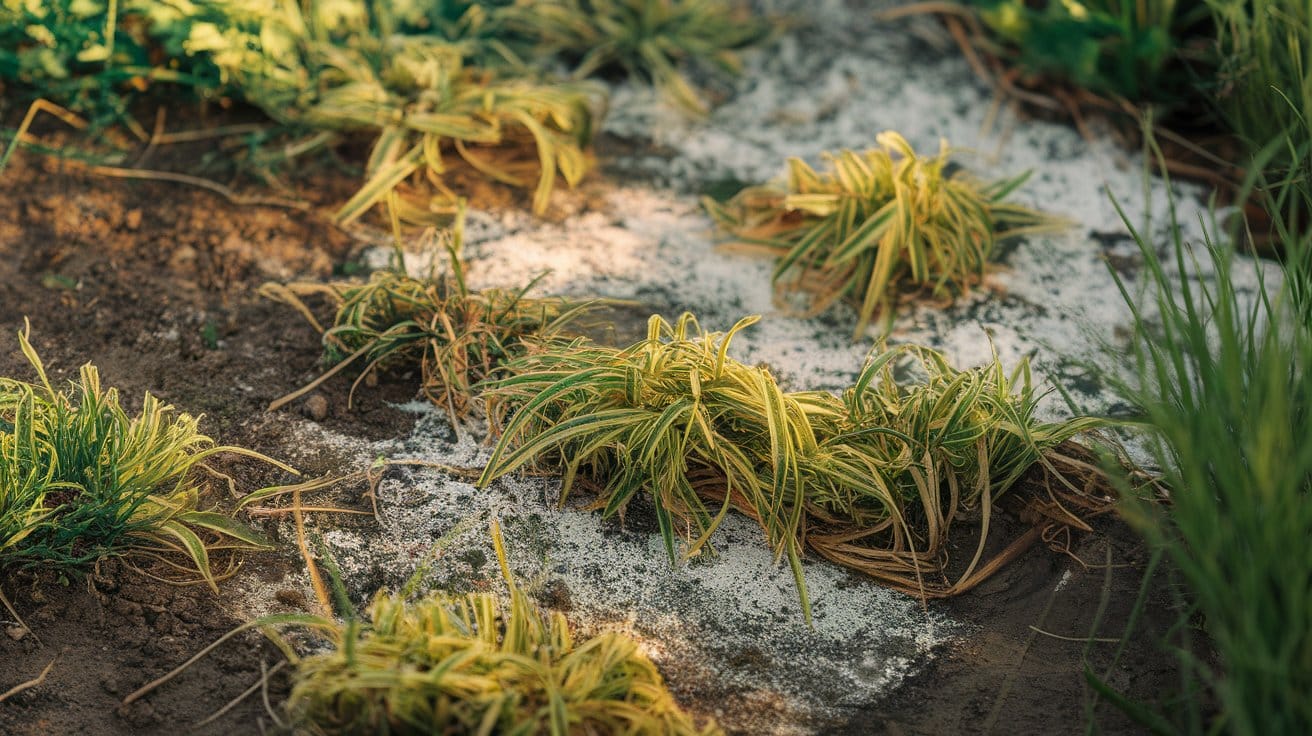There’s something comforting about the scent of herbs filling a kitchen, especially the earthy aroma of thyme.
Bringing home a fresh bundle instantly inspires new dishes and adds warmth to any meal.
Many people avoid thyme because its thin stems and tiny leaves can seem difficult to handle.
Once you know how to chop thyme correctly, it becomes simple and satisfying.
With a few basic tools and straightforward techniques, fresh thyme leaves can be prepared efficiently while keeping their natural aroma and flavor intact.
This step-by-step process helps anyone chop thyme neatly, safely, and with confidence in any kitchen.
How To Prepare Fresh Thyme For Chopping?
Proper preparation is the first step toward mastering how to chop thyme effectively.
It ensures the leaves stay fragrant and easy to cut while preventing mess or waste during the process.
-
Hold The Sprig By The Tip: Use one hand to grasp the top of the thyme sprig while keeping it steady.
-
Strip The Leaves Downward: With the other hand, pinch near the top and slide fingers down the stem in the opposite direction of leaf growth to remove the leaves.
-
Separate Tender Stems From Woody Ones: Keep softer stems, as they’re edible and flavorful, but discard thicker, woody parts that stay tough even after cooking.
-
Use an Herb Stripper for Larger Batches: When working with multiple sprigs, an herb stripper or the back of a knife makes the task faster and easier.
-
Rinse and Pat Dry: Wash gently under cool water, then dry thoroughly before chopping to prevent slipping and clumping.
What You Need Before Chopping Thyme?
| Tool Or Item | Purpose |
|---|---|
| Chef’s Knife | Ensures clean, sharp cuts without bruising delicate leaves. |
| Cutting Board | Provides a stable, non-slip surface for safe chopping. |
| Herb Stripper Or Kitchen Shears | Simplifies leaf removal from stems for larger batches. |
| Paper Towel | Helps dry thyme completely before chopping for smoother cuts. |
| Clean Workspace | Keeps the area organized and efficient, reducing clutter and distractions. |
How To Chop Thyme?
Chopping thyme requires steady rhythm, precision, and just a few mindful movements. Once practiced, it becomes one of the easiest and most useful kitchen techniques.
1. Gather The Leaves

After removing thyme leaves from their stems, gather them into a small mound at the center of the cutting board.
Keeping the leaves close together prevents scattering and helps maintain a steady rhythm while chopping.
A tidy pile offers better control and cleaner cuts, saving time and effort.
Being organized early on ensures consistency and keeps the workspace neat, setting the foundation for accurate chopping.
2. Hold The Knife Correctly
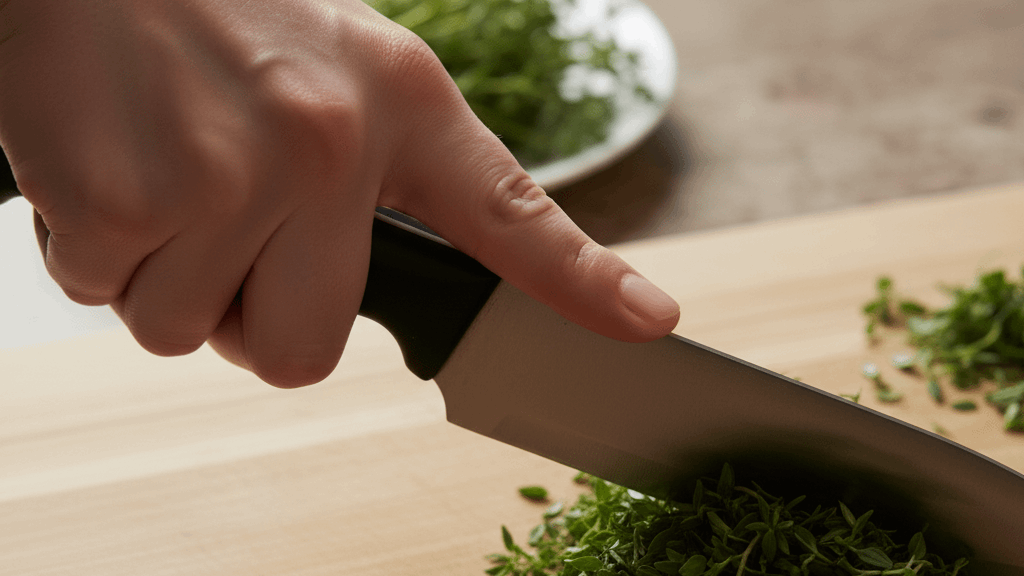
Hold the knife with a relaxed yet secure grip, using the dominant hand for motion and the other hand for balance.
Curl the fingertips inward slightly for safety and steadiness.
Keep the knife’s tip anchored on the board and move it in a light rocking motion instead of pressing down.
This movement protects texture, keeps flavor locked in, and helps bring out thyme’s delicate aroma while improving overall knife technique.
3. Chop Evenly
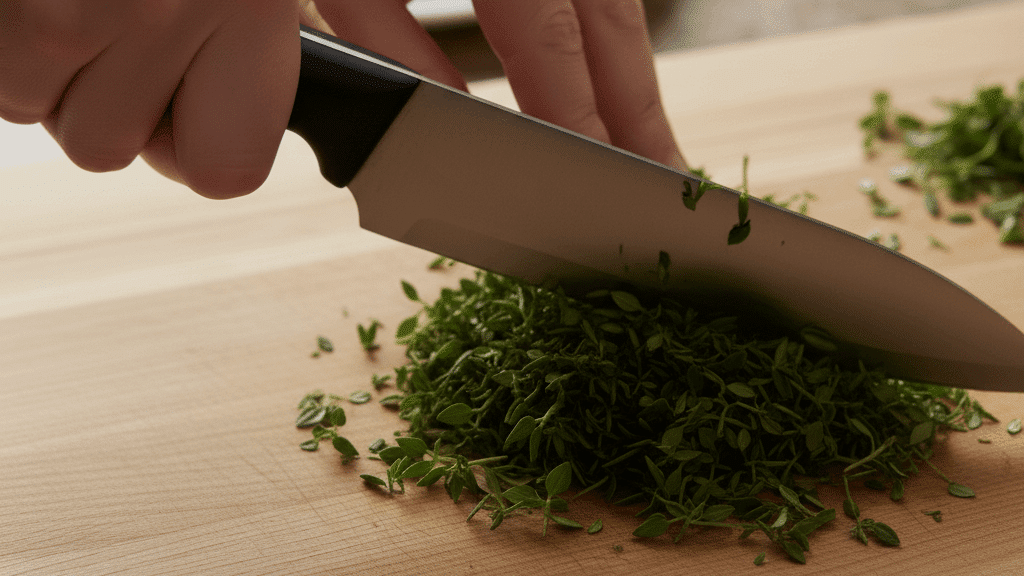
Rock the knife gently back and forth through the thyme, keeping the motion steady and consistent.
Gather the leaves occasionally into a compact pile so each cut stays uniform.
Take time and let the blade glide naturally across the board for smoother results.
This method ensures fine, balanced pieces without bruising.
For heartier dishes, leave the thyme slightly coarse, but for sauces or marinades, chop it more finely so it blends smoothly.
4. Collect And Use
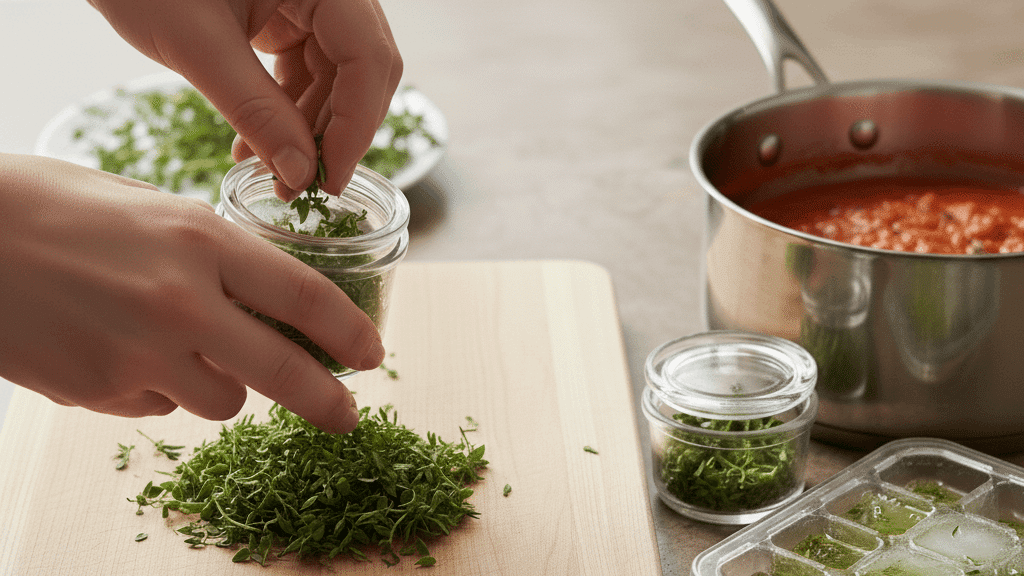
Use the flat side of the knife to gather the chopped thyme neatly into a pile.
Add it straight to a recipe for a fresh, herbal touch or store it in an airtight container for a few days.
For longer storage, freeze small portions in olive oil or butter within ice cube trays, as each cube can later add flavor to soups, sauces, or stews with minimal effort.
Being aware of how to chop thyme at this stage helps retain its oils and keeps each dish aromatic and balanced.
Tips For Handling And Storing Fresh Thyme
| Tip | Description |
|---|---|
| Store Smartly | Wrap unwashed sprigs in a damp paper towel and refrigerate in an airtight bag for up to two weeks. |
| Freeze Effectively | Chop thyme lightly and freeze in olive oil or butter cubes for easy use in cooked dishes. |
| Air Dry Naturally | Tie small bunches and hang upside down in a cool, dry place to preserve flavor longer. |
Good thyme storage can make a big difference.
Keeping herbs dry, cool, and protected helps them stay flavorful for days and ensures their aroma lasts long after chopping.
Knowing how to chop thyme properly also helps in preparing it for long-term preservation.
Common Mistakes To Avoid When Chopping Thyme?
Even simple cooking steps can go wrong without care. Avoid these common mistakes to keep thyme fresh and flavorful:
- Chopping Wet or Unprepared Leaves: Moisture causes clumping and uneven cuts, so always rinse lightly and pat dry before chopping.
- Using Poor Knife Technique: A dull or heavy knife crushes leaves, so use a sharp blade with gentle rocking motions for smooth cuts.
- Overchopping or Cutting Too Early: Finely chopping too soon releases oils and dulls the aroma, so prepare thyme just before cooking for the best flavor.
How To Use Chopped Thyme In Recipes?
Chopped thyme adds warmth and balance to everyday dishes.
It enhances flavor without overpowering and pairs well with vegetables, meats, and sauces.
1. Roasted Potatoes With Garlic And Thyme
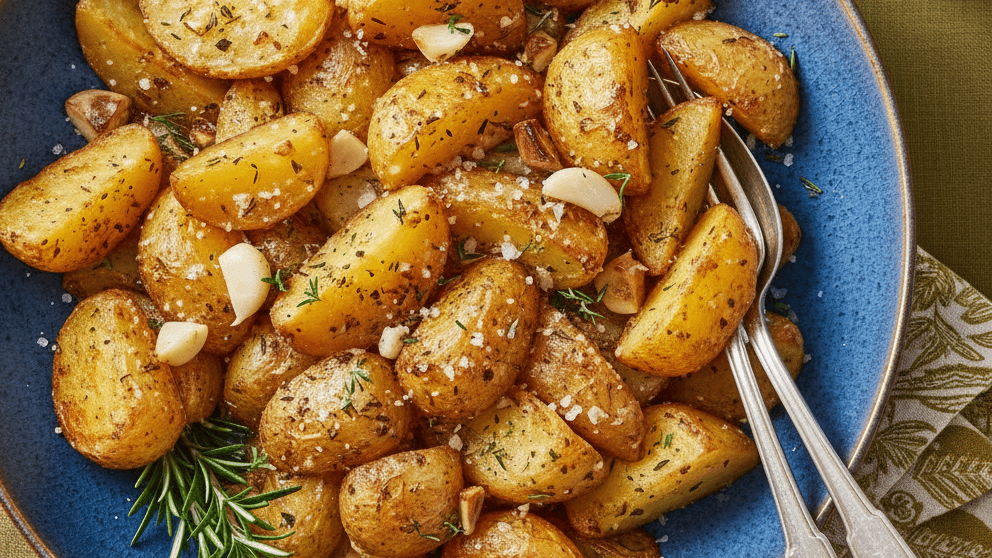
| Ingredients | Amount |
|---|---|
| Baby Potatoes Halved | 1½ Pounds |
| Olive Oil | 2 Tablespoons |
| Garlic Minced | 2 Cloves |
| Freshly Chopped Thyme | 1 Tablespoon |
| Salt And Black Pepper | To Taste |
Instructions:
- Preheat the oven to 400°F (200°C).
- Toss the potatoes with olive oil, garlic, thyme, salt, and pepper.
- Spread evenly on a baking sheet and roast for 30 minutes, turning halfway through.
- When golden and crisp, remove and sprinkle extra thyme on top.
- It’s a flavorful, aromatic side dish that pairs well with nearly any meal and highlights how to chop thyme efficiently for even flavor distribution.
2. Lemon Thyme Chicken Marinade

| Ingredients | Amount |
|---|---|
| Boneless Chicken Breasts | 2 |
| Olive Oil | 2 Tablespoons |
| Lemon Juice | 1 Tablespoon |
| Chopped Thyme | 1 Teaspoon |
| Garlic Minced | 1 Teaspoon |
| Salt And Pepper | To Taste |
Instructions:
- In a bowl, mix olive oil, lemon juice, thyme, garlic, salt, and pepper.
- Coat the chicken evenly and refrigerate for at least 30 minutes.
- Grill or pan-sear until tender and golden.
- The thyme’s earthy flavor combines perfectly with lemon, giving the dish a light, aromatic taste that works for any meal.
3. Creamy Mushroom Sauce With Thyme
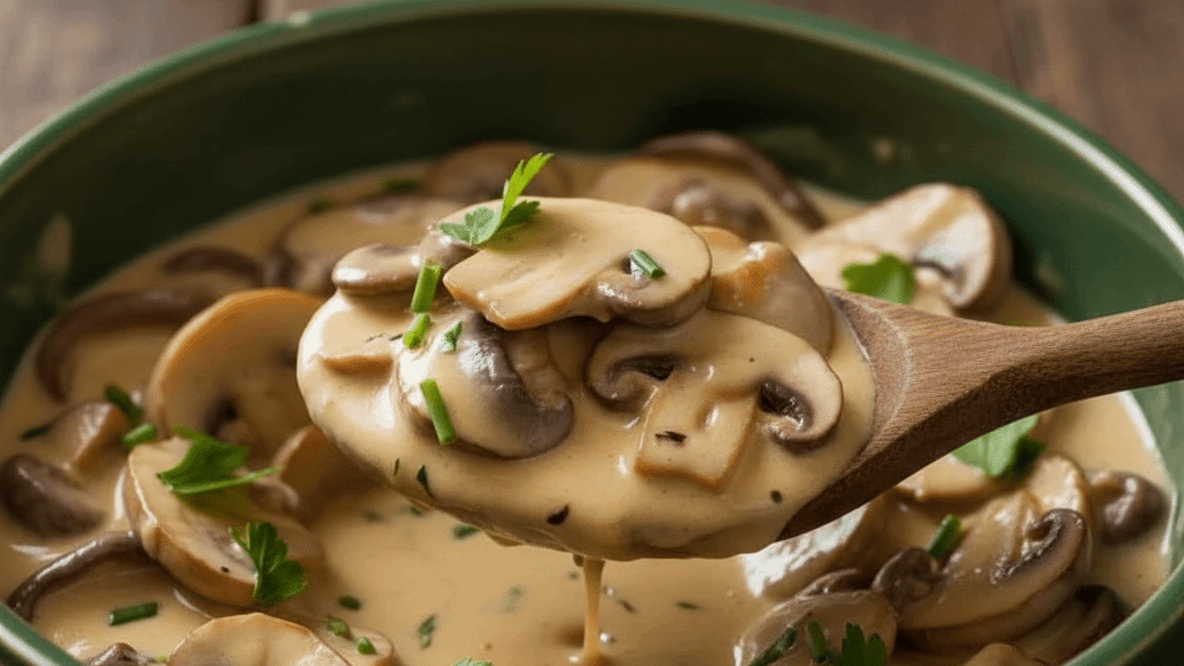
| Ingredients | Amount |
|---|---|
| Butter | 1 Tablespoon |
| Mushrooms Sliced | 1 Cup |
| Heavy Cream | ½ Cup |
| Chopped Thyme | 1 Teaspoon |
| Salt | ¼ Teaspoon |
| Black Pepper | Pinch |
Instructions:
- Melt butter in a skillet over medium heat, then add mushrooms.
- Cook until golden and their moisture evaporates.
- Stir in cream, thyme, salt, and pepper, and simmer until slightly thickened.
- This sauce brings a rich, herby flavor to pasta, steak, or roasted vegetables.
Conclusion
Chopping thyme brings together patience, precision, and appreciation for detail.
It turns a small kitchen task into a meaningful way to improve everyday cooking.
Each motion, from stripping the leaves to slicing evenly, keeps the herb’s natural oils and aroma intact, adding subtle depth to meals.
Taking time to handle thyme correctly improves taste and ensures dishes stay bright and fragrant.
This process encourages focus and calm, creating a satisfying rhythm that feels rewarding every time.
Mastering how to chop thyme not only improves preparation skills but also helps preserve thyme storage quality while adding freshness that elevates every recipe.
Do you have a special method for keeping thyme fresh and flavorful? Tell us in the comments!
Frequently Asked Questions
Does Thyme Have Any Side Effects?
Thyme is safe for most people, though excessive use may cause mild stomach upset or skin irritation; always use moderate amounts and consult a doctor if sensitive or allergic.
Why Do Chefs Use Thyme?
Chefs use thyme for its earthy flavor, natural aroma, and ability to balance both savory and sweet dishes; it enhances complexity without overpowering, creating depth and harmony in every recipe prepared.
What Fresh Herb Is Closest To Thyme?
Oregano is the herb most similar to thyme in flavor, texture, and aroma; it delivers a warm, peppery taste, making it a reliable substitute for thyme in most everyday recipes.

